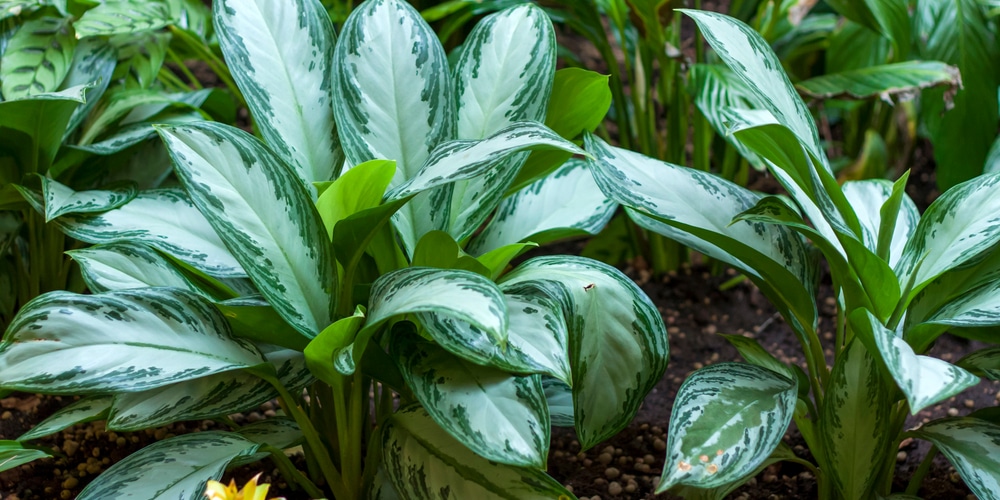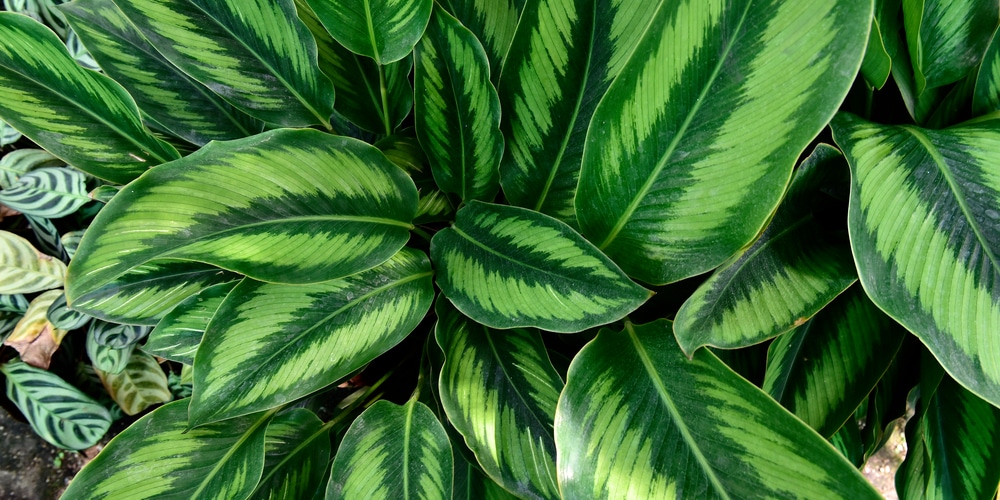Aglaonema silver bay plants are tropical houseplants that look great and can get reasonably large if given the correct care and attention. Although these plants are tropical, they can also thrive in areas of lower light. Aglaonema Silver Bay plants are generally considered easy to care for. They are oxygen-producing plants that will help clean the air and make a great addition to any home or office.
If you live in a warmer climate, you may also grow the Aglaonema Silver Bay plant outdoors. Let’s look at how to care for an aglaonema silver bay plant.
What is an Aglaonema Silver Bay Plant?
The Aglaonema Silver Bay is a popular Aglaonema variety that looks attractive and is easy to care for. It has lovely foliage, which is a vivid green and has striking patterns. The leaves have various hues from dark to light green and even silver. This plant is also commonly referred to as the Chinese evergreen and is an excellent plant for beginners. It makes a great housewarming gift as it’s said to bring luck and prosperity into the home.
While the Silver Bay has a uniform leaf coloration, Aglaonema Pictum Tricolor has more of a random pattern if you are looking for something a little more rare and different.
Aglaonema Silver Bay belongs to a genus of houseplants that originate from subtropical regions of central Asia. They are also commonly found growing in New Guinea and produce beautiful flowers in the spring.
The Silver Bay can grow quite large in the right conditions, and plants can reach a height of about 30 inches at maturity. Plants generally grow wider than they are tall and can grow to 36 inches in width. The leaves are oval in shape with pointed ends and can grow up to 12 inches long with a width of 4 inches. The Aglaonema Silver Bay has shiny stems and foliage.
While Aglaonema Silver Bays look great, it’s worth noting that the plants are toxic. This should be kept in mind if you have young children or pets. These plants are poisonous to both cats and dogs as they contain insoluble calcium oxalates. If the crystals are consumed, they will cause allergic reactions and symptoms such as vomiting, fatigue, stomach cramps, disorientation, and diarrhea. Seek medical or veterinary attention as soon as possible if your child or pet has any of the above symptoms.
It’s a good idea to wear gloves when handling your plant as it could cause skin irritation.
Caring for an Aglaonema Silver Bay Plant
Aglaonema Silver Bay looks great in modern offices or living rooms. If you have a room with low light and less-than-ideal exposure to sunlight, the Aglaonema Silver Bay is the perfect plant for you as it can tolerate and even thrive in low-light conditions. These plants can also tolerance damp conditions as well as drier climates.
There are approximately 21 Aglaonema plant varieties, all of which have similar care requirements. Here are some tips to help you care for your Aglaonema Silver Bay plant:
Watering Requirements
The amount of water your plant needs will depend on where its living and how much sunlight it’s exposed to. If your Aglaonema Silver Bay is placed on a windowsill or in a sunny location that receives high light, you’ll need to water your plant more regularly.
Be careful not to overwater your plant. Allow the topsoil to dry out up to two inches before watering your plant thoroughly. This is known as the ‘soak and dry’ method of watering, which is generally used for tropical plants and succulents.
If your plant is kept in a room with lower natural light, you can allow the soil to dry out completely before watering again. However, it would help if you remembered that your plant isn’t a cactus and does still need to be watered regularly. If you underwater your plant, it will suffer.
Sunlight and Temperature
The Aglaonema Silver Bay thrives in a variety of conditions but shouldn’t be left in the full sun. Your plant will suffer from sunburn and die if it’s exposed to the full sun, even if the sun is shining through glass.
Aglaonema Silver Bays can survive in the shade or in rooms that don’t get much natural light. However, low light may make your plant thin and cause it to look leggy. To grow a healthy, thriving plant its best to provide bright indirect sunlight. You can also use artificial fluorescent lights.
Aglaonema Silver Bays are tropical plants that grow in warm, humid environments. They can thrive in the home and shouldn’t be left outside if the temperature falls below 60°F. These plants are fairly heat and drought-resistant but are not tolerant of the cold.
Pruning Your Plant
You may like to prune your Aglaonema Silver Bay plant to improve its appearance and encourage a full and bushy look. It’s a good idea to remove some leaves to avoid having an unkempt-looking plant. You can cut off some of the new foliage as they appear. Also, remove any leaves that look old, tattered, or dyeing. The easiest way to prune your plant is by gently pinching off the leaves with your fingers.
Aglaonema Silver Bay Problems
Aglaonema plants don’t generally suffer from too many issues. They are easy to care for and relatively resistant. However, overwatering can cause root rot, which will lead to fungal infections.
Some common pests can affect your plant, the main one being mealy worms. These oval-shaped insects have a flat-looking body and six legs. They also have an antenna, tails, and a fringe around their bodies.
Mealybugs can damage your Aglaonema Silver Bay and other houseplants as they such the sap from the plant. They like to hide underneath the plant’s leaves to remain hidden and can breed quickly, which will lead to an infestation.
Conclusion
Aglaonema Silver Bay plants make a great addition to any home or office. They look great and, like all plants, are beneficial to the environment. These plants are relatively easy to care for and can thrive in various conditions as they are very adaptable. Be careful not to overwater your plant as this can cause root rot.

